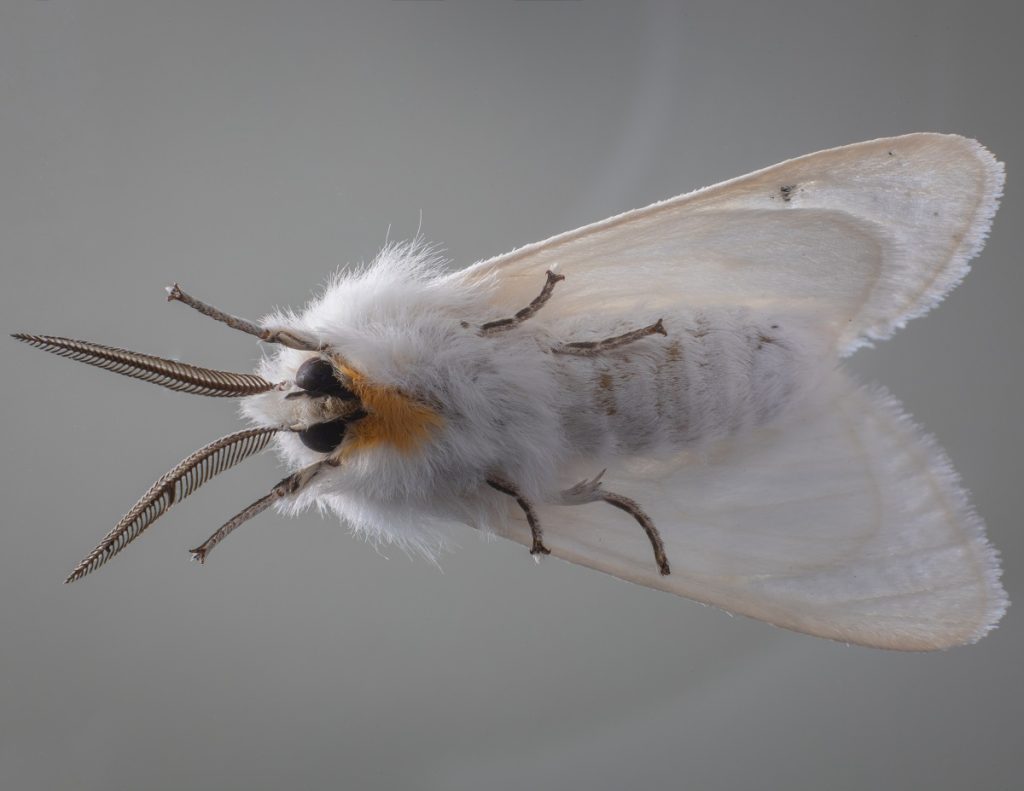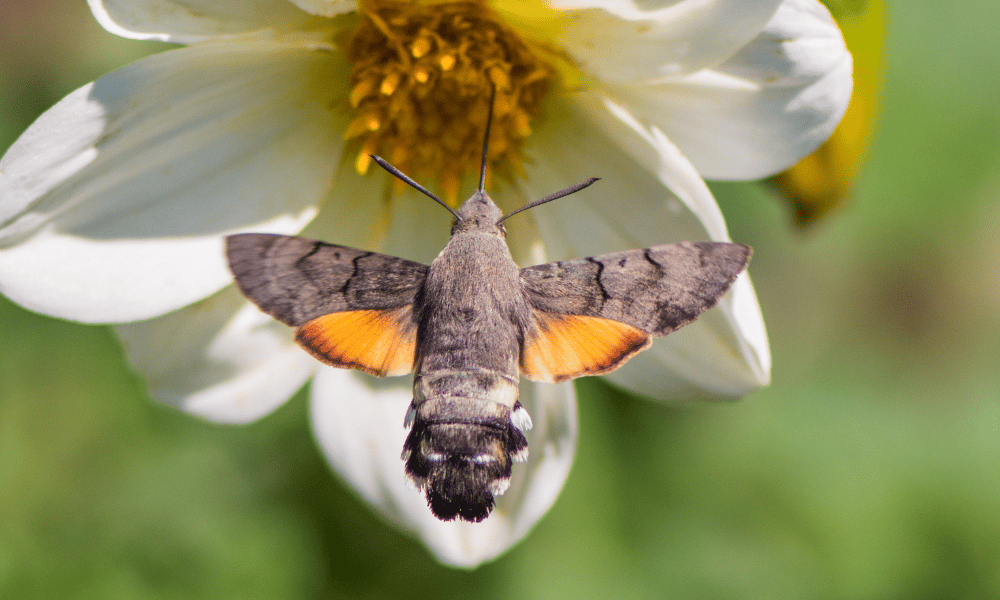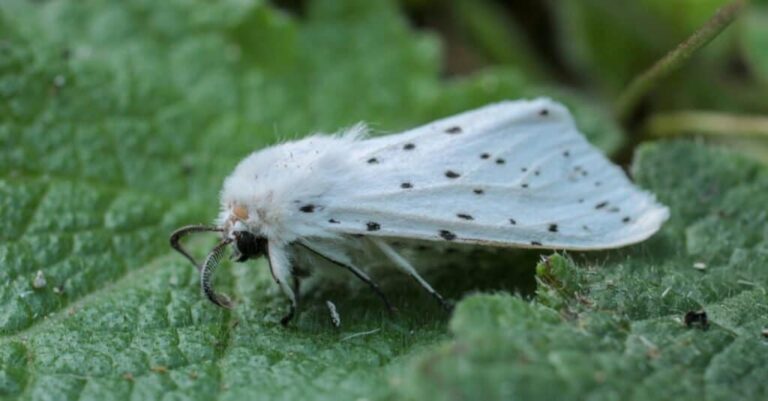The lifespan of moths can vary depending on the species, environmental conditions, and other factors. In general, moths have relatively short lifespans compared to some other insects. Here are some general guidelines for the lifespans of moths:
- Luna Moth: Luna moths are known for their striking appearance but have a relatively short adult lifespan of about 1 to 2 weeks.
- Silkworm Moth: Silkworm moths have a similarly short adult lifespan of around 5 to 10 days.
- Tiger Moth: The adult stage of tiger moths can last for a few weeks to a couple of months.
- Hawk Moth: Hawk moths can live for several weeks to a few months as adults.
- Polyphemus Moth: Polyphemus moths typically live for about 1 to 2 weeks as adults.
What Is The Typical Lifespan of Moths?

Moths are a diverse group of insects belonging to the order Lepidoptera, which also includes butterflies. Their lifespan, like that of many insects, consists of several distinct stages: egg, larva (caterpillar), pupa (chrysalis), and adult.
The typical lifespan of a moth can vary significantly depending on factors such as species, environmental conditions, and geographic location. Here’s a breakdown of each stage:
Egg Stage: Moth eggs are usually laid on or near the larval food source. The time it takes for the eggs to hatch varies but is generally around 5 to 10 days, though it can be longer for some species.
Larva (Caterpillar) Stage: This is the longest phase in a moth’s life cycle. Caterpillars vary greatly in size, shape, and coloration among moth species. The duration of the larval stage can range from a few weeks to several months, depending on species and environmental conditions. During this phase, the caterpillar feeds voraciously to store energy for pupation.
Pupa (Chrysalis) Stage: Once the caterpillar has accumulated enough nutrients and energy, it undergoes metamorphosis into a pupa. The pupa is a non-feeding, often dormant stage where the caterpillar transforms into an adult moth. This stage can last anywhere from a few weeks to several months, again depending on the species.
Adult Stage: The adult moth emerges from the pupa and typically lives for a relatively short period. Moth adults are primarily focused on mating and reproducing.
Furthermore, the adult lifespan can range from a few days to several weeks, but some species have adapted to live longer, up to a few months.
It’s important to note that there is a wide range of variation in the lifespan of moth species. Some moths, like the Luna moth (Actias luna), have relatively short adult lifespans, while others, such as the Cecropia moth (Hyalophora cecropia), can live longer as adults.
Comparison with other insect lifespans
| Insect Type | Adult Lifespan | Notable Characteristics |
| Moths | Days to weeks | Highly variable depending on species and conditions. |
| Butterflies | Days to weeks | Short adult lifespan, diurnal, focus on reproduction. |
| Ants and Bees | Weeks to months (workers) | Highly variable within colonies, queens live longer. |
| Dragonflies/Damselflies | Weeks to months | Short adult lifespan, focus on mating and hunting. |
| Cicadas | Weeks to months | Lengthy underground nymphal stage, short adult life. |
| Beetles | Weeks to months (varies) | Vast diversity, adult lifespans vary widely by species. |
What Are The Key Factors That Affect Moth Lifespan?
Moths comprise an incredibly diverse group of insects, with over 160,000 species described to date. Each species has its own unique life history and ecological niche, which influences its lifespan. Here are some key points regarding species variation in moth lifespan:
Life History Strategies: Different moth species have evolved various life history strategies. Some species are short-lived and reproduce quickly, while others have longer lifespans but produce fewer offspring.
For instance, the Luna Moth (Actias luna) has a relatively short adult lifespan of about one week, while the Giant Leopard Moth (Hypercompe scribonia) can live for several months.
In addition, mating behavior can vary significantly among moth species. Some moths mate multiple times during their short adult life, while others mate only once. This can impact their overall lifespan and reproductive success.
Environmental Conditions
Moth lifespans are strongly influenced by the environmental conditions they encounter throughout their life cycle. Here are some aspects to consider:
Temperature: Temperature plays a critical role in moth development and lifespan. Warmer temperatures often lead to faster development and shorter lifespans, while cooler temperatures can slow down their life cycle and extend their lifespan.
Humidity: Moths, especially during their pupal stage, are sensitive to humidity levels. High humidity can reduce the risk of desiccation and extend the lifespan of pupae.
Light Pollution: Artificial light sources can disrupt the natural behavior of moths, such as mating and foraging. This can lead to shorter lifespans and reduced reproductive success in some species.
Availability of Food
The availability of suitable food sources is crucial for moth survival and lifespan. Here’s how it affects them:
Host Plants: Many moth species have specific host plants that their caterpillars feed on. The abundance and quality of these host plants directly impact larval development and, consequently, adult moth lifespan.
Nectar Sources: Adult moths primarily feed on nectar from flowers. The presence of suitable nectar sources in the environment can determine how long adult moths can sustain themselves and reproduce.
Predation and Natural Threats
Moths face numerous natural threats, including predators, parasites, and diseases. These factors can significantly affect their lifespan:
Predators: Birds, bats, spiders, and other insect-eating animals prey on moths. Moths have developed various defense mechanisms such as camouflage, toxic chemicals, and evasive flight patterns to avoid predation. The ability to evade or deter predators can impact their overall lifespan.
Parasites and Diseases: Moths can be vulnerable to parasitic wasps, flies, and various diseases. Infestations or infections can weaken moths, leading to a shorter lifespan.
Environmental Hazards: Moths may also face hazards such as pesticide exposure and extreme weather events. These environmental stressors can have adverse effects on their longevity.
What Are The Lifespan of Specific Moth Species?
These moth species have unique characteristics and adaptations that make them fascinating in their own right. Their lifespans, appearances, and behaviors are diverse, reflecting the remarkable diversity found within the world of moths.
Luna Moth
| Lifespan (Adult) | 7 to 10 days |
| Entire Life Cycle Duration | Few months |
| Wingspan | Approximately 4.5 to 6.5 inches (11 to 16 cm) |
| Wing Color | Pale green |
| Distinctive Feature | Long, curly tails on hindwings (predator deterrent) |
| Activity | Nocturnal |
| Behavior | Attracted to artificial lights at night |
Silkworm Moth
| Lifespan (Adult) | 2 to 3 days |
| Entire Life Cycle Duration | 6 to 8 weeks |
| Appearance | Creamy white or light brown, thick and fuzzy |
| Notable Feature | Primary source of silk production due to cocoon silk |
| Economic Importance | Key role in the history of textile production due to domestication |
Tiger Moth
| Lifespan (Adult) | 1 to 2 weeks |
| Entire Life Cycle Duration | Several months |
| Wings | Often colorful and patterned |
| Size | Medium-sized |
| Unique Feature | Ability to produce sound for defense |
Hawk Moth
| Lifespan (Adult) | 2 to 3 weeks |
| Entire Life Cycle Duration | A few months |
| Flight Abilities | Strong, fast flight; hovering similar to hummingbirds |
| Appearance | Often mistaken for hummingbirds due to hovering |
| Proboscis (Mouthparts) | Long proboscises for reaching deep into tubular flowers for nectar |
Polyphemus Moth
| Lifespan (Adult) | 1 to 2 weeks |
| Entire Life Cycle Duration | A few months |
| Wingspan | Up to 6 inches (15 cm) |
| Wing Color | Reddish-brown with distinctive eyespots |
| Distinctive Feature | Eyespots on hindwings, mimicking the eye of a Cyclops |
What Are The Different Stages in a Moth’s Life?

The short duration of the adult stage is a critical aspect of their life cycle, ensuring their survival and successful reproduction while minimizing risks and resource competition. This intricate life cycle contributes to the diversity and abundance of moth species found worldwide.
Explanation of the Different Stages in a Moth’s Life
Egg Stage: The life of a moth begins as an egg. Female moths typically lay their eggs on or near the food source of their caterpillar offspring.
The eggs vary in size, shape, and color depending on the moth species. They are usually designed to be inconspicuous and protected from predators.
Larval Stage (Caterpillar): Once the eggs hatch, they give rise to caterpillars. This is the most crucial stage in a moth’s life as it’s when the moth consumes the most. Caterpillars are voracious eaters and are adapted for feeding.
In addition, they go through several molts, shedding their exoskeleton to accommodate their growing bodies.
Pupal Stage (Chrysalis): After the larval stage, the caterpillar enters the pupal stage. Here, it undergoes a remarkable transformation known as metamorphosis.
During this period, the caterpillar’s body is broken down, and a completely new structure is formed. Inside the protective pupal case (chrysalis), the tissues and organs of the adult moth develop.
Furthermore, this process can vary in duration, ranging from a few weeks to several months, depending on the moth species and environmental conditions.
Adult Stage (Imago): Once the metamorphosis is complete, the adult moth emerges from the pupal case. This final stage is the one most people are familiar with, as it is the only stage where moths are commonly seen.
In addition, adult moths are typically characterized by their wings and reproductive structures. Their primary goal is to mate and reproduce, often living only a short time. They have evolved to be efficient at finding mates and laying eggs to continue the life cycle.
Emphasis on the Short Duration of the Adult Stage:
The adult stage of a moth’s life is often surprisingly short, and this has several important implications:
Reproductive Focus: Adult moths devote most of their energy to reproduction. Their short lifespan encourages them to find mates quickly and lay eggs to ensure the survival of their species. This intense focus on reproduction is crucial for moth populations to persist.
Predator Avoidance: By having a brief adult stage, moths reduce their exposure to predators. Since they are most vulnerable during this time, a shorter duration decreases the chances of being preyed upon. This adaptation enhances their chances of successfully reproducing.
Environmental Adaptability: The relatively short adult stage allows moths to adapt to changing environmental conditions. If environmental factors like temperature, food availability, or predation risk fluctuate, moths can adjust their reproductive efforts and life cycle accordingly.
FAQ’s
What kills moths?
Various factors can kill moths, including predators, pesticides, natural predators like spiders and birds, and environmental conditions like extreme temperatures.
What moth has the shortest lifespan?
Luna moths have a relatively short adult lifespan, lasting about 7 to 10 days.
Can moths survive in a room?
Yes, moths can survive in a room if they have access to suitable conditions, such as food sources (like fabrics or pantry items) and are not trapped.
What smells do moths hate?
Moths are often repelled by strong-smelling substances like cedar, lavender, cloves, and mothballs.
Do moths like the light?
Many moths are nocturnal and are attracted to artificial lights at night, which can sometimes lead to them being drawn indoors.
How old is the oldest moth?
It’s difficult to determine the age of wild moths, but in captivity, some moths may live for a few weeks to a couple of months in their adult stage.
Conclusion
In summary, we have delved into the intricate world of these often-overlooked insects. We’ve learned about the various stages of a moth’s life, from egg to larva, pupa, and finally, the majestic adult. Throughout this journey, we’ve uncovered the remarkable adaptations and strategies moths employ to ensure their survival and reproduction.
From the ephemeral day-flying species with a matter of weeks to live, to the patient nocturnal moths with months to spare, each stage and duration has its purpose and place in the grand tapestry of nature.

